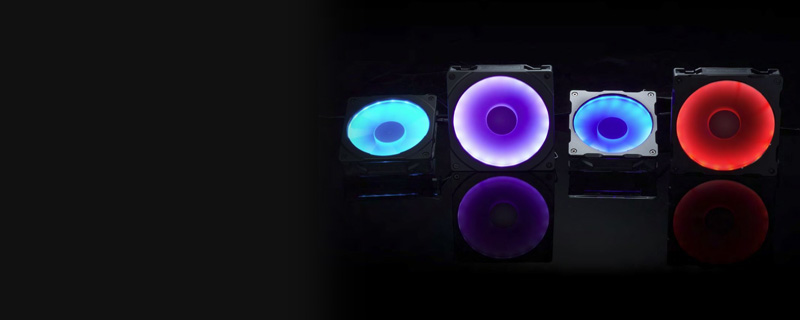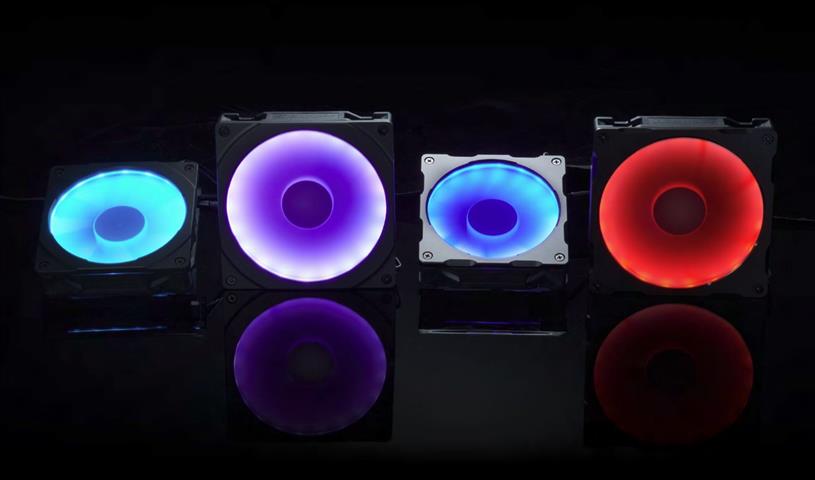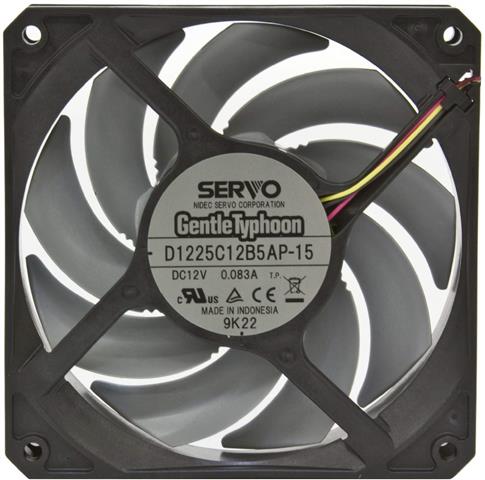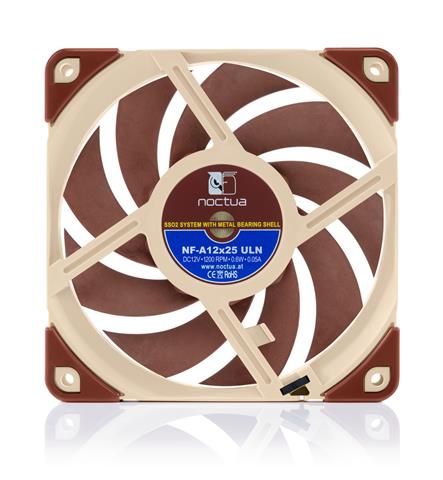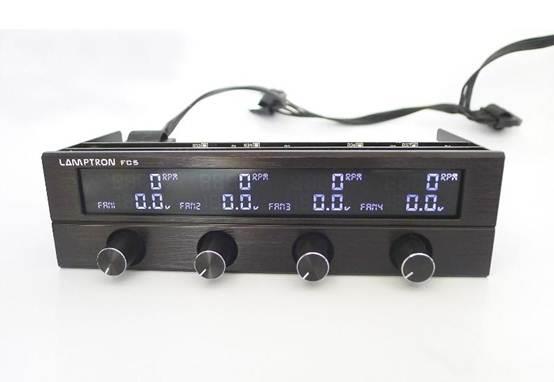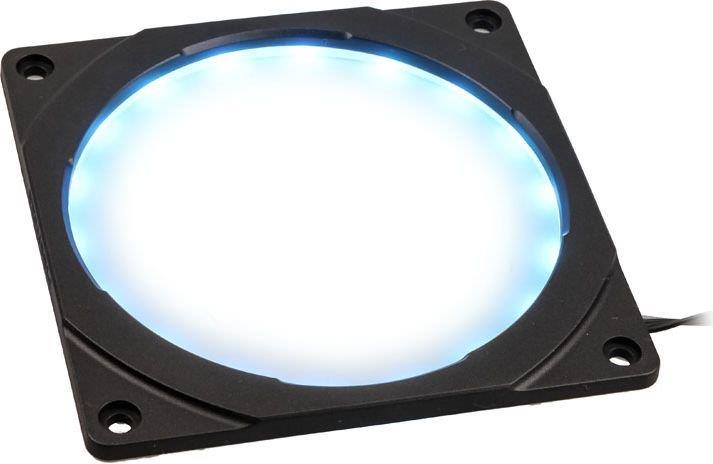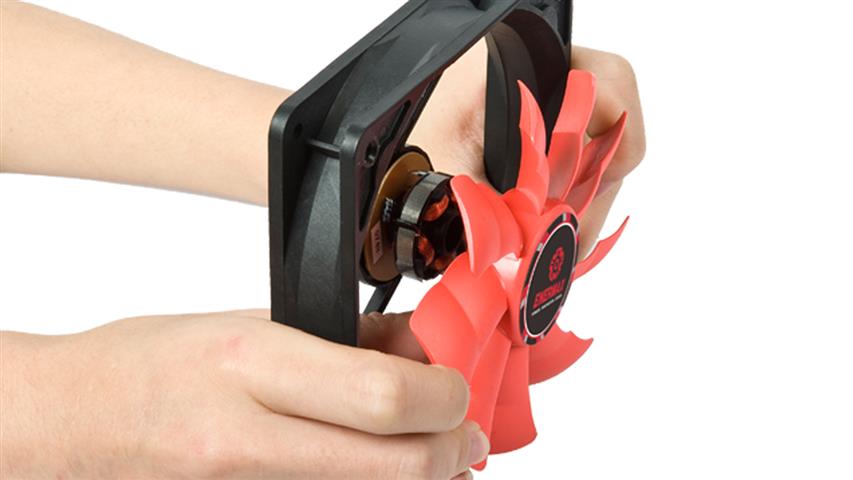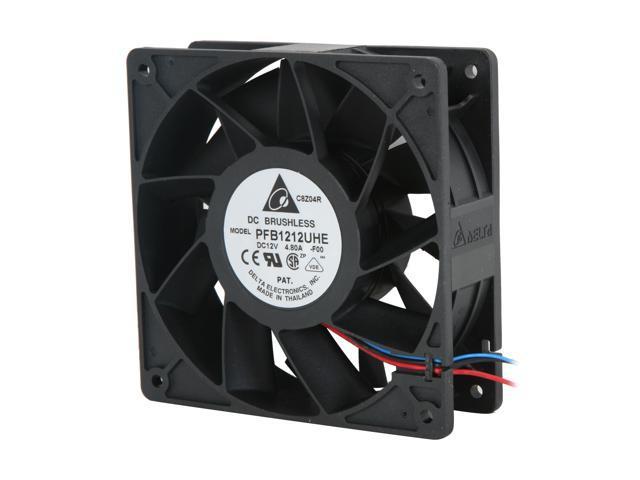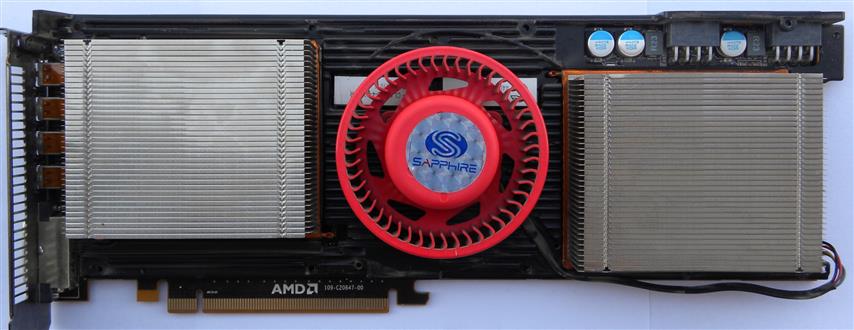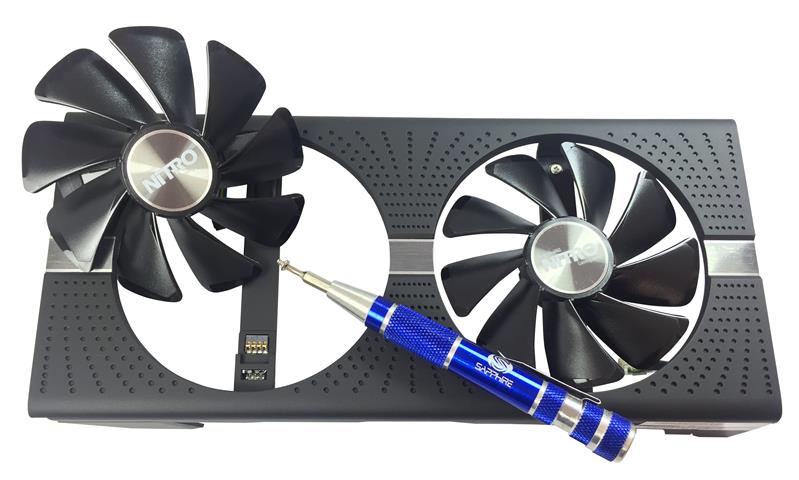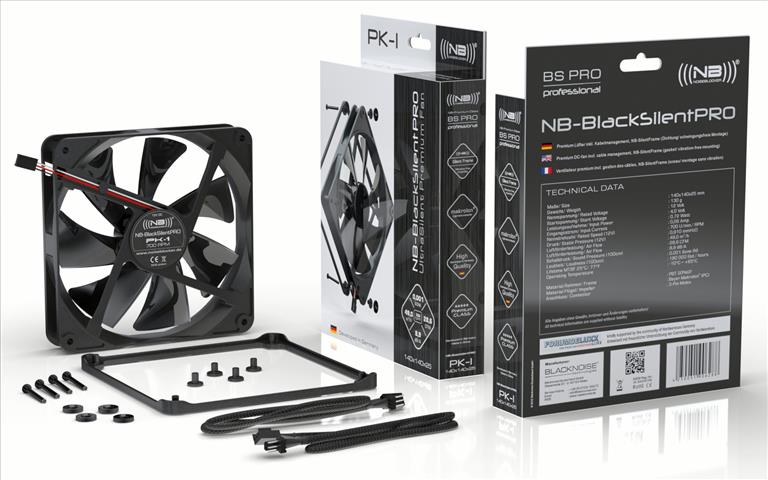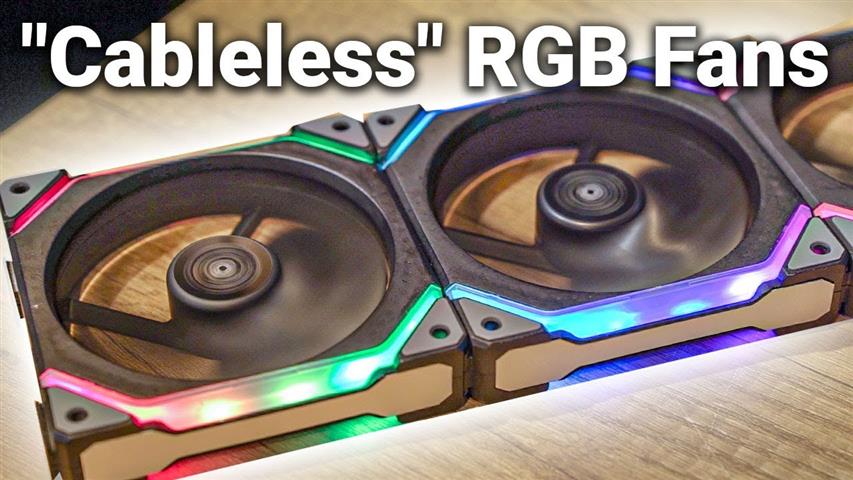
In the first part of this series we introduced PC fans, looking specifically at size, speed and static pressure. Today we bring you the second part, which covers everything else you’ll need to consider when looking for a PC fan.
Bearing
Responsible for longevity and acoustic performance, the bearing is one of the most important parts of the fan. Hardware enthusiasts appreciate a good quality bearing. To see just how much, google yourself up Scythe Gentle Typhoon (by Nidec Servo) fans and the esteem they have among advanced users of water-cooled setups.
Legendary Scythe Gentle Typhoon, unfortunately it is an end-of-life product
Sleeve bearings should be avoided. While fans based on this solution are the most affordable, they also have the shortest lifespan. When new, they usually operate quietly, but they degrade quickly and become noisier. They’re also poor in orientations other than vertical – horizontal orientation makes them deteriorate even faster than normal. High temperatures also quicken their demise.
Ball bearings are much more robust. While ball bearing fans aren’t as quiet as new sleeve bearing fans, they don’t degrade over time and don’t get louder. They work well in vertical and horizontal orientations and offer a good overall performance. Server-grade fans typically use ball bearings. You can find good quality ball bearing fans that don’t cost a fortune.
FDB (Fluid Dynamic Bearing) is a version of sleeve bearing, but don’t let that stop you: the improvements are so advanced that FDB is easily worth recommending. Moreover, fans based on FDB bearings are among the most expensive.
Rifle, hydraulic and SSO (Self Stabilizing Oil-pressure) are also refined versions of sleeve bearing. There is a wide range of good fans based on such bearings.
Noctua 120 mm fan, SSO bearing is clearly indicated on the sticker
Hydrodynamic bearings are like ball bearings but use pressurized liquid or gas. They run quieter than ball bearings but in most cases have to spin fast to work as intended.
Magnetic levitation (maglev) fans are repelled from the bearing by magnetism, so no moving parts are actually touching each other. Thanks to the attendant lack of friction, maglev bearings should be the quietest and longest lasting. But all of these advantages come at a price. Another drawback is the limited choice of such fans on the market.
Noise
Unfortunately, fan manufacturers don’t follow normalized noise measuring procedures. So it’s pointless to compare the noise made by different producers’ fans. It would only be useful for comparing fans made by the same company.
For information about noise, look for comparison tests put together by reputable media. Of course, you also can’t compare noise data across tests made by different media outlets.
You should also take opinions on noise from other users with a grain of salt. Some are silence-freaks and describe something as deafeningly loud when others hear little more than a light breeze. Others are perfectly fine with wildly roaring fans.
Note: You should take into consideration that dBA scale is not linear, but logarithmic. With the numbers we operate on (0 – 150 dBA), this means that:
- 3 dB more translates to ~2 times more sound
- 10 dB more equals ~10 times more sound
- 20 dB is ~100x more sound
Apart from such obvious parameters as rotating speed, the bearing has a tremendous impact on how loud the fan is—and becomes over the long term.
Note: Noise levels declared by manufacturers are usually unrealistic. For instance, 25 dBA is much below the average background noise of a normal room without any movement, which is around 31 dBA. Of course, when a manufacturer says its fan comes in at 60 dBA, rest assured you’ll be getting jungle-level racket.
It is also worth noting that putting anything in front of a fan will make it noticeably louder. So, if you install an intake fan in a PC case, try to do it in such a way that the fan blows the air through something and minimize the surfaces in front of the fan. For more on this, check out the video:
Header
3-pin fan headers have gradually been supplanted by 4-pin PWM connectors. While 3-pin isn’t worse in every respect, 4-pin gives more precise software control over fan RPM. But if you want to go old-school and set the RPM manually by voltage, using a 5.25” panel, for example, then a 3-pin fan is the better option.
5.25” bay fan controller from Lamptron
There are also fans powered by 4-pin Molex or SATA connector, but usually they are either of low quality or intended for industrial use.
RGB
There are a few categories of RGB fans to consider.
- Fans that use an RGB standard and need to be plugged into an external controller or controller in the motherboard. Unfortunately, this is somewhat uncharted territory: there are many standards and consumers can easily get confused.
- Fans that come with a proprietary controller that is incompatible with anything else. I wouldn’t recommend such a solution.
- Illuminating the frame
- Illuminating the fan blades
- Illuminating both
Beyond RGB, there is also ARGB (addressable RGB) which gives more control over lighting effects. It also requires different types of controller.
Note: Depending on the fan blades you choose (white / transparent / black), you can have different effects when lighting them. I personally prefer white fan blades because they nicely boost the light color.
If you want a particular fan model that doesn’t come with RGB, you’re covered—Phanteks makes frames for fans that add RGB lighting.
Phanteks Halos frame
Note: If you would like to have plain white light, buy fans with purely white LEDs. White glow made by RGB LEDs always have some kind of tint (usually blue or green). RGBW solves the problem in the case of LED strips, but truth be told, I didn’t manage to find any RGBW fans. In RGBW system apart from red, green and blue there is also a dedicated white LED. Thanks to that, white lighting color can be pure.
Maintenance
Even if you are using dust filters, it is impossible to keep the inside of you PC entirely dust-free. It is therefore vital to periodically dust your computer, especially the fan blades and radiator fins, because they gather dust the quickest, and it directly affects cooling performance.
Cleaning the fans can be tedious, but removable fan blades make the job that much easier.
Enermax Magma – fan with easily detachable fan blades
As for the sleeve bearing fans, if you find they’re getting louder, lubricate them with a few drops of oil, but only after you read up on your model and how to approach it. In addition to quietening them down a notch, you might also prolong the bearing’s lifespan.
Special purpose fans
As mentioned above, there are industrial-grade fans that offer high RPMs. They also usually have a very long lifespan and are very loud. The best known brands are Delta Electronics and Sanyo Denki.
120-mm Delta fan: 250 CFM at over 66 dBA
If you decide to use such a fan it is important to watch the operating voltage. Many industrial fans run at 24 V or 5 V. While 24 V probably won’t even start at 12 V or spin slowly, a 5 V model will most likely blow up.
What we are talking about here, mainly, are axial fans, though there are also centrifugal fans, which are usually called blowers and were a dominant solution for cooling graphics cards for many years. Slowly, they have become obsolete in PCs.
Dual-GPU card with blower fan in the centre (cooler shroud is removed)
Additional features
Fans are the part of a graphics card that is most prone to fail. Most manufacturers have them installed in a standard manner – with 3 screws and a long, fixed cable. That makes them hard to swap out when something goes wrong. If a card features an easy fan swap capability—as do models from the SAPPHIRE NITRO + Gaming Series—it can improve the process of cleaning the fans and the entire card, as well as allowing you to change the fan out for a new one, if needed. With the NITRO + graphics card fans, all you need to do is undo one screw and swap out the fan. It’s a piece of cake.
While a sleeved cable is more of an aesthetic thing—and sleeve quality can vary considerably—it is nonetheless nice to see on more premium fans.
Detachable cables are also a novelty. They help maintain the rig and also provide flexibility, whether you need a short or a long cable.
NoiseBlocker Black Silent Pro with detachable cable; there are 2 cables of different length in the bundle
Though it’s new, it would be remiss of me not to mention daisy chain functionality. Some fans are designed to be connectable with each other. Three fans thus connected need only a single cable attached to the “master” fan.
Lian-Li UNI fans (photo by Bit-tech)
Summary
- If you want a fan for installation in a case, pick something with high CFM
- For the best results on coolers and water-cooling radiators, aim for high static pressure.
- If possible, pick140-mm fans.
- Don’t trust manufacturer data about noise levels – check group tests where a sound level meter has been used.
- Think through what RPM level is best for you.
- Aim for ball / FDB / SSO or magnetic levitation bearings.
- Make sure you know which RGB ecosystem your fans are compatible with.
The articles content, opinions, beliefs and viewpoints expressed in SAPPHIRE NATION are the authors’ own and do not necessarily represent official policy or position of SAPPHIRE Technology.





